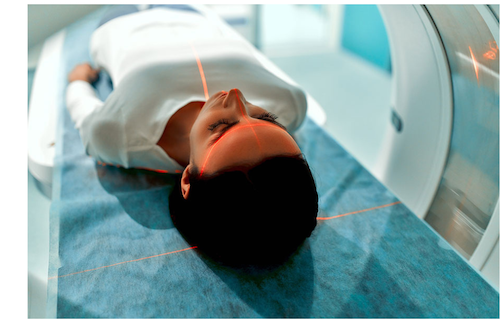
Remote Scanning on Imaging Systems: Why a Registered Technologist's Presence is Crucial
In the ever-evolving world of healthcare technology, remote CT and MRI scanning has emerged as a convenient and efficient method of delivering medical imaging services. This innovative approach allows diagnostic imaging to be conducted remotely. The availability of this technology offers a solution to situations where certain exams may not be performed by technologists due to reasons such as comfort level or lack of specific training. By utilizing remote scanning, healthcare facilities can minimize the need to outsource exams, thereby ensuring that the revenue stream remains within the hospital or outpatient center. This technology serves as a valuable resource that can be accessed remotely by healthcare teams, enabling them to broaden their capabilities and provide a wider range of services to patients.
While the benefits of remote scanning are undeniable, this Radiation Safety and Regulatory Compliance specialist strongly believes that highlighting the significance of a registered technologist's presence during the process is crucial. In this blog post, we will explore the significance of a registered technologist's presence during remote scanning and their role in ensuring patient safety and quality care.
Organizational Support for In-Person Technologists
I had the opportunity to attend the 2023 annual AHRA meeting in Indianapolis, Indiana, where the topic of remote scanning garnered significant attention. During the event, various speakers discussed the advancements in technology, and that an offsite remote technologist is now capable of initiating scanning sequences for CT scans or MRIs. However, it was widely agreed upon that, currently, the onsite presence of a registered technologist trained in the specific modality is highly recommended during remote scans.
 The importance of a registered technologist's presence during remote scanning is reaffirmed by recent guidelines provided by the American College of Radiology (ACR) and the American Society of Radiologic Technologists (ASRT). Both organizations have emphasized the necessity of having a registered technologist present during the remote scanning process. Interested readers can find more information on this topic within the ASRT Practice Standards for Medical Imaging and Radiation Therapy (ASRT) and the 2023 ACR Draft Manual on MR Safety (ACR Draft)
The importance of a registered technologist's presence during remote scanning is reaffirmed by recent guidelines provided by the American College of Radiology (ACR) and the American Society of Radiologic Technologists (ASRT). Both organizations have emphasized the necessity of having a registered technologist present during the remote scanning process. Interested readers can find more information on this topic within the ASRT Practice Standards for Medical Imaging and Radiation Therapy (ASRT) and the 2023 ACR Draft Manual on MR Safety (ACR Draft)
The guidelines provided by these reputable organizations serve as a testament to the industry's recognition of the importance of a registered technologist's expertise and technical skills during remote scanning. These guidelines are essential for ensuring patient safety, maintaining the quality of imaging, and adhering to regulatory compliance.
The Importance of a Registered Technologist
By having a registered technologist present during remote scans, healthcare facilities can provide an extra layer of assurance and confidence in the accuracy and safety of the procedures. The technologist's training in the specific modality enables them to address any potential challenges or technical issues that may arise during the process promptly. Here are some of the advantages that come with having a registered technologist on-site during the remote scanning process.
Technical Expertise and Quality Assurance
Registered technologists possess comprehensive knowledge of radiographic equipment, techniques, and safety procedures. They are trained to position patients correctly, adjust units for optimal imaging quality, and ensure the safety and comfort of patients during the procedure. In remote scanning, their technical expertise is equally vital. A registered technologist is responsible for supervising the patient, positioning them correctly on the imaging table, and acquiring high-quality images. Their presence ensures accurate, reliable, and consistent image acquisition, minimizing the chances of errors or incorrect interpretations.
Radiation and MRI Safety
Effective radiation and MRI safety measures protect both patients and healthcare professionals from unnecessary exposure and incidents. Registered technologists are well-versed in safety protocols, and by having a registered technologist present during remote scanning, there is increased assurance that safety protocols are adhered to. This helps to minimize radiation dose to patients and healthcare personnel involved in the process and ensuring MRI safety.
 Patient Care and Communication
Patient Care and Communication
While technology allows for remote imaging, it cannot replace vital aspects of patient care and communication. A registered technologist plays a fundamental role in ensuring patient comfort, addressing concerns or questions, and providing reassurance during a procedure. Moreover, they act as a liaison between the patient and the interpreting radiologist, ensuring that all relevant clinical information associated with the exam is communicated accurately, thus enhancing the diagnostic accuracy of the interpretation.
Quality Control and Troubleshooting
Even with advanced technology, occasional technical issues may arise during remote scanning. A registered technologist possesses the ability to troubleshoot technical problems, ensuring that imaging is performed optimally. They can spot positioning errors, equipment malfunctions, or other issues that might affect image quality, and make the necessary adjustments or take corrective actions promptly. Their presence guarantees that technical difficulties are promptly addressed, preventing any delays or interruptions in the diagnostic process.
Conclusion
Remote scanning offers numerous advantages in providing diagnostic imaging services promptly and efficiently. However, it is essential to recognize the crucial role of an onsite registered technologist in maintaining the highest standard of patient care, ensuring patient and staff safety, and optimizing image quality. Their expertise, technical skills, and ability to address patient concerns during the procedure contribute to accurate interpretations and the overall success of the remote scanning process. As the healthcare industry continues to embrace ongoing technological advancements, the presence of a registered technologist during remote scanning remains an indispensable component in delivering safe and effective patient care.
It is worth noting that as technology continues to advance, future updates to guidelines may occur, state regulations will more than likely be updated regarding this technology as well, all reflecting new capabilities and considerations. Therefore, it is vital for healthcare professionals to stay updated on the latest guidelines and recommendations provided by authoritative bodies, such as the ACR, ASRT, and your state regulatory department, to ensure compliance and the delivery of high-quality patient care.
In conclusion, the AHRA meeting shed light on the growing interest in remote scanning and its potential benefits in healthcare. However, it was collectively agreed upon that having a registered technologist present during the remote scanning process remains crucial at this time. The guidelines provided by the ACR and ASRT support this notion and highlight the importance of maintaining patient safety, image quality, and compliance with regulatory standards. By adhering to these guidelines, healthcare facilities can maximize the benefits of remote scanning while ensuring the highest standard of patient care.

